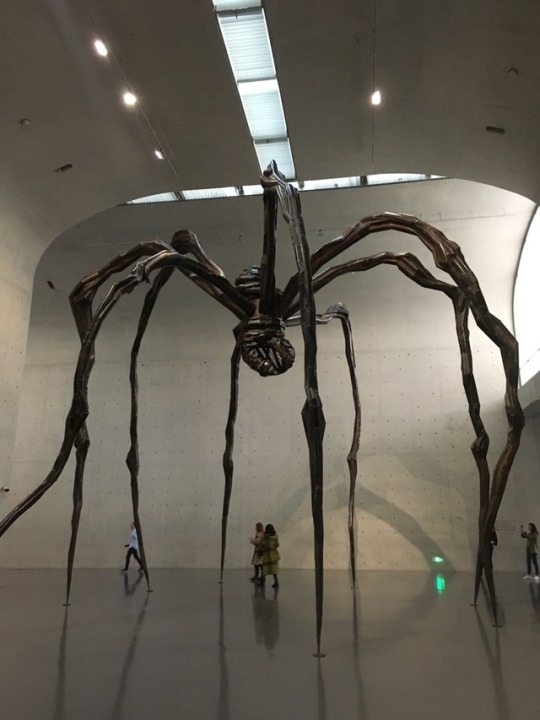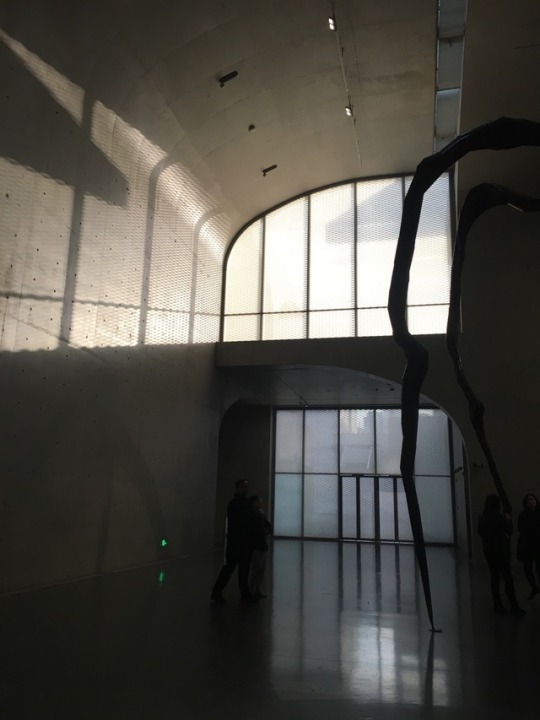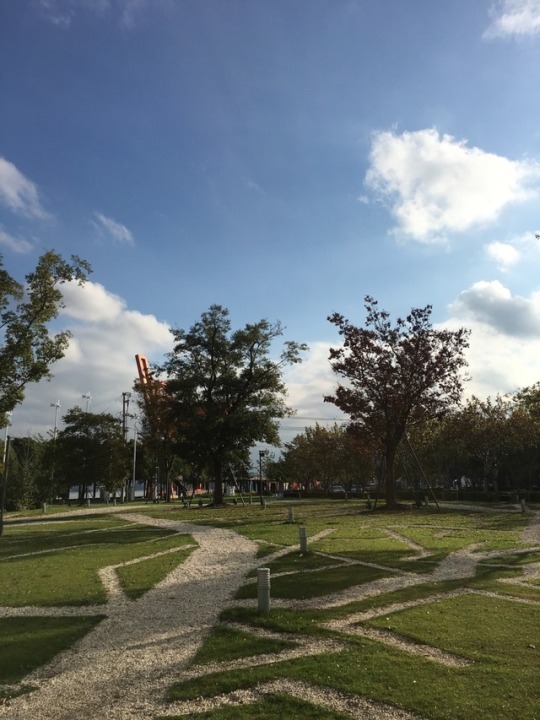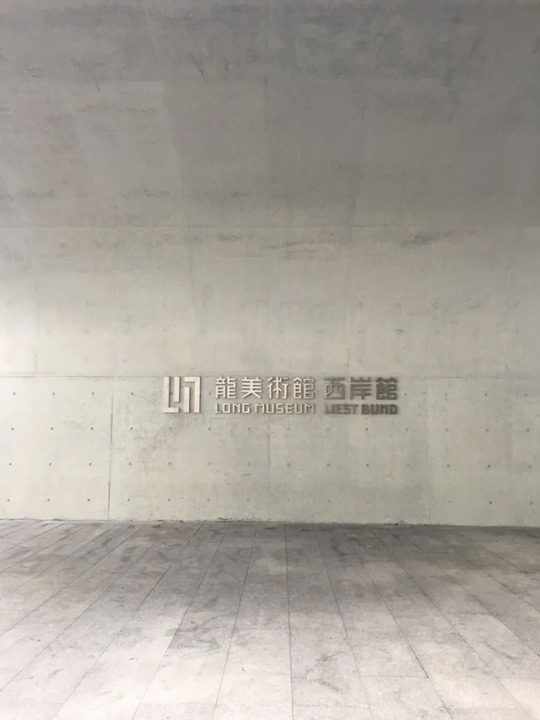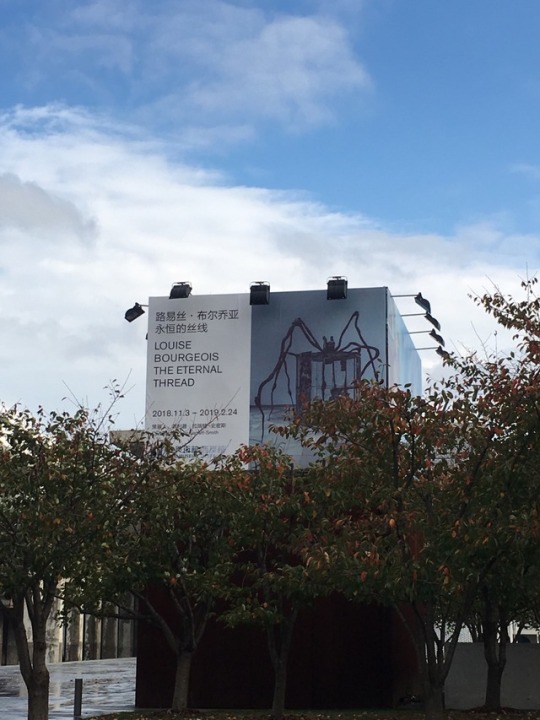BA in Art History. art reviews / exhibition sharing / other artistic things
Don't wanna be here? Send us removal request.
Text
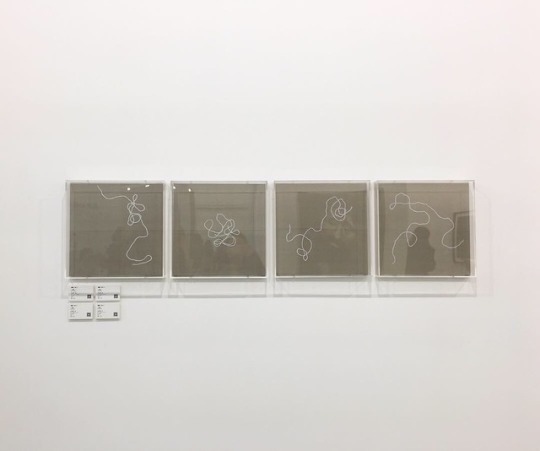
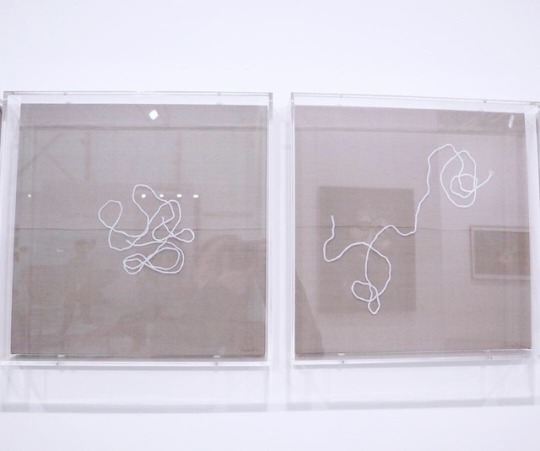
“ONE METER”
Pan Xi,
2018.
at West Bund Art and Design fair.
0 notes
Text
Building 1-5 / review ep2
Building 1-5 by Antony Gormley unequivocally highlights his spectacular oeuvre in questioning our relationship with the space around us. Completed in 2013, the set of five, cast-iron sculptures carry the freedom of interpretation as either singular sculptures or as a collective set, in which both readings express Gormley’s profound understanding of space. Following his ubiquitous formation in sculptural works, Building 1-5 allows an array of possibilities in interpreting them from any direction. As the title suggests from 1-5, it is common to read from the direction of left to right. While it may seem that Gormely’s fascination with architectural space is not addressed in this set of work, however, it is dexterously implied through his meticulous choice in medium and title. Titled Building 1-5, Gormley makes reference to the nature of constructing buildings. Initially from a skeleton exterior, to being filled with layers of content that is designated for human habitation. As the two physical matter meets, the collective whole of humans and buildings progressively possesses a larger volume of space. Nevertheless, there is still voluminous area that interacts between humans and the architectural space. It is the beauty of space that evokes Gormley to constantly question and celebrate this breathtaking pattern.
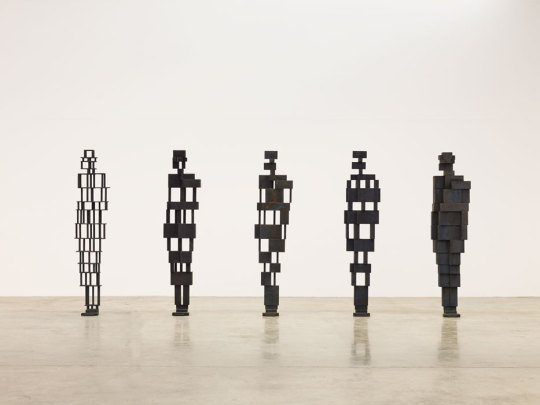
BUILDING 1-5, 2013 Cast iron Dimensions variable Photograph by Stephen White, London
Source: http://www.antonygormley.com/sculpture/chronology-item-view/id/2791/page/106#p1
With Building 1-5, each standing sculptural figure contains an enigmatic identity that grasps our vision. With its voluministic build up of cast iron blocks, the thickness transcends gradual intensity as it fills the void that is represented by the last sculpture. Despite filled, the darkness casted by the cast-iron material emanates an ambiguous and spiritless tone. As a whole, it also reminiscence with our memory of growth and death in relationship with space, as our physical body takes up more and more spatial volume over time. As death occurs, our dynamic with space changes. We turn into dust and particle matter, and continues to interplay with space. Presented in a structural and rigid formation, the sculptures additionally mirrors our physical mass in comparison with the flexibility and permeable nature of space. In discussion on our relationship with space without a physical mass, it is likely to resonate such philosophical thinking with the gunpowder drawings by Cai Guo-Qiang. Despite the constrast in concept and medium, one can pertain Gormley’s idea of space through Cai’s disperse of gunpowder on paper. In his work, Cai emphasises the power and destructive nature of gunpowder, which has strong connotations with war. However, it is also the nature of destruction that results in fine fragility that displays on the paper. While Cai masterfully communicates the transfer of energy, from a tangible, and seemingly negative source, to another dimension that captures a palpable and dynamic energy, Gormley’s utilizes Building 1-5, a set of tangible exemplary to critique and redefines the concept of actual space.
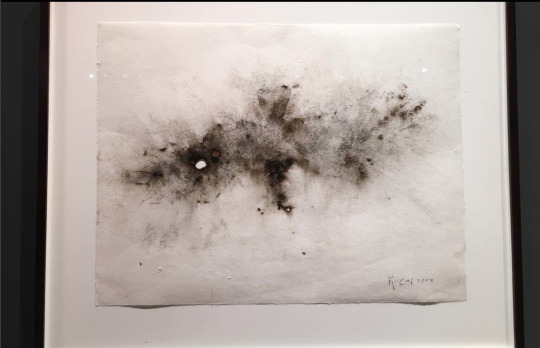
EAGLE, 2004 Gunpowder drawing Cai Guo-Qiang
0 notes
Text
ChiZi exhibition / review ep1
A journey that is mesmerising and personalised, ChiZi (赤子), is a highly anticipated collection of works by Hong Kong artist TikKa, as he encapsulates his thoughts on love and human relationship through the character named So Ha. Completed in 2017, ChiZi marks a significant transformative moment in TikKa’s oeuvre that began in 2009. In this collection, the protagonist So Ha expresses a level of gradual maturity that was once subdued, which emanates the personality and growth of the artist’s daughter.
CHIZI, a circular canvased acrylic painting (70cmH x70cmW) is undeniably a spectacular piece that embodies the depths of emotion of a father. Presented in a circular canvas, it paints an elusive and majestic realm of possibilities. The unique shape of the canvas is symbolic of alpha and omega; the beginning and the end. It is likely interpreted as a fresh start in different stages of a person’s life. Particularly, So Ha is depicted with characteristic features, with an enlarged head and eyes, but paired with a petite nose and mouth. This contrast is an absolute reminiscence of many ubiquitous Japanese manga characters. Her peculiar features, along with pale skin complexion blends impeccably with the pastel background. Her strands of silk-like, white colored hair breaks the preconception of ageing, and alludes the notion of longevity. As a whole, it embodies the protection of TikKa as a father towards her daughter through a soft and cloud-like setting. The addition of trees, mountains and clouds elevate So Ha with comfort, and adds a touch of Chinese heritage, which coincides with TikKa’s emphasis of pertaining his Chinese cultural background. Additionally, the warm tonality paints a picturesque tableau with the combination of spiritual figures.
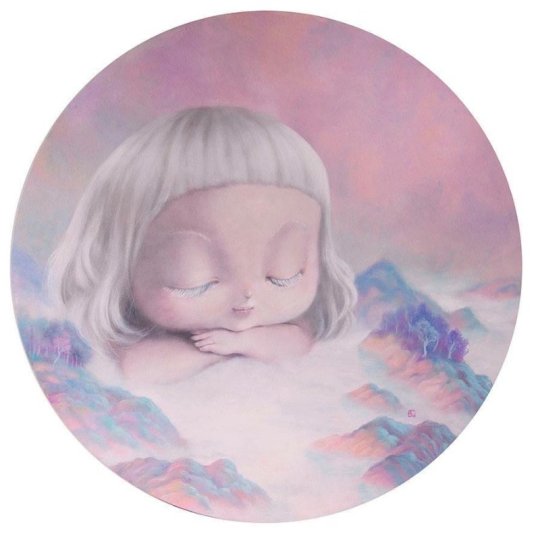
(Figure 1: CHIZI, TikKa, 2017)
https://www.facebook.com/pg/tikkagallery/photos/?tab=album&album_id=1735771936450400
With such idiosyncratic character, the title of the piece, ChiZi ties perfectly with TikKa’s artistic endeavour. The word “ChiZi” means pureness of the heart and mind. Paired with CHIZI, the collection becomes an emblematic motif that is traceable though his years of practice. In addition to the development of So Ha, from a youngster to a mature woman, ChiZi reminds viewers to hold onto creative thoughts, as it is easily forgotten in an commercialised society that hinders autonomous thinking.
While TikKa shares his personal space of imagination, his distinctive stylization bears similarity to the renowned works of Nara Yoshitomo. Alike TikKa, Yoshitomo epitomises a minimal and vibrant space that indicates his influences with Western and Eastern culture, which heightened his spiritual perspective. The works of Yoshitomo and TikKa may perceive as childlike, however within this style lies specific messages that dismay normal societal rules. In a conversation with MaBelle, TikKa compares love as an onion, peeling away each delicate layers. Each unraveling can cause tears to flow, triggering happiness, sadness and touching, memorable moments. Therefore, ChiZi evokes an initiation to reflect upon each intimate and personalised relationship that we cherish.
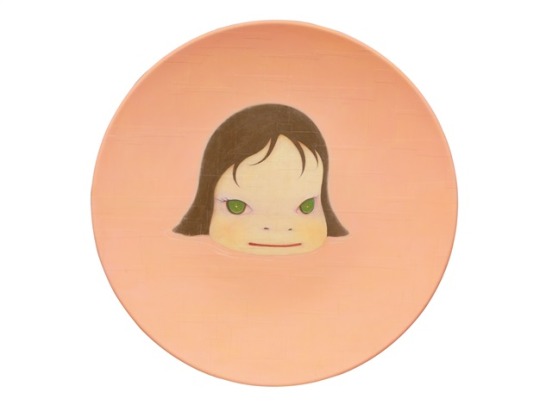
(Figure 2: In the Pinky Lake , Yoshitomo, Nara, 2004)
http://www.artnet.com/artists/yoshitomo-nara/in-the-pinky-lake-P35NiKJB9ItsDJDi2N58mQ2
0 notes
